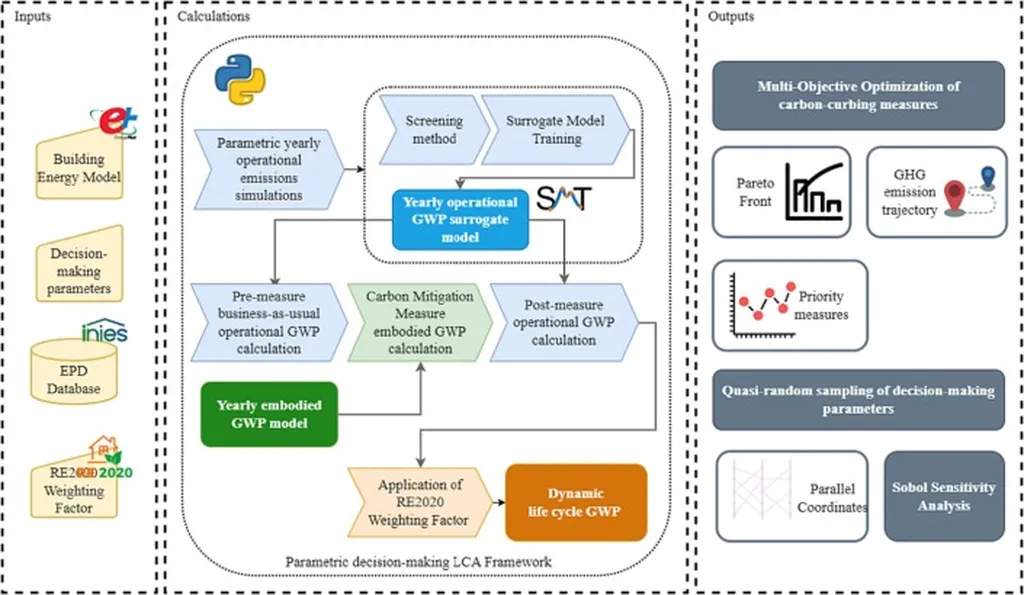In a significant stride towards sustainable construction, researchers have developed a dynamic approach to life cycle impact assessment (DLCIA) that could reshape how we evaluate and improve the environmental performance of buildings. Published in the journal *Scientific Reports* (translated from German as “Scientific Reports”), this study, led by Chujun Zong from the Chair of Energy Efficient and Sustainable Design and Building at the Technical University of Munich, introduces a novel method that captures the dynamic nature of a building’s life cycle, offering more accurate and actionable insights.
The building sector is a major contributor to environmental impacts, and life cycle assessment (LCA) has long been a tool to quantify these impacts and guide improvements. However, conventional LCA often falls short in capturing the dynamic changes that occur over a building’s life cycle. “Our study enhances the plausibility of building LCA by implementing a dynamic life cycle impact assessment (DLCIA) for a solid masonry building,” Zong explains. This approach aligns with the latest Intergovernmental Panel on Climate Change Assessment Report (IPCC AR) 6, providing a transparent and clear calculation process of global warming potential (GWP) over time.
The research demonstrates that dynamic GWP calculations based on the DLCIA approach are consistently 5–7% higher than static counterparts. This discrepancy is crucial as it captures the continuous decay of greenhouse gas (GHG) emissions in the atmosphere and the environmental impact of each emission event. “This method guided strategies that achieved a 31.52% reduction in total GWP,” Zong notes, highlighting the practical benefits of the DLCIA approach.
One of the most compelling aspects of this study is its integration of a dynamic circular recycling model into the improvement solutions during the End-of-Life (EoL) phases. This integration underscores the potential of combining multiple dynamic factors and critically discusses the concept of a circular economy. “To promote a circular economy in construction, it is essential not only to improve the conversion rate of waste materials into compounds for virgin materials but also to explore cross-material recycling and recycling among multiple building entities,” Zong emphasizes.
The implications for the energy sector are profound. As buildings become more energy-efficient and sustainable, the demand for innovative materials and recycling technologies will grow. This research provides a robust framework for evaluating the environmental impacts of these materials and technologies, guiding the development of more sustainable building practices.
Future dynamic LCA (DLCA) studies should integrate DLCIA with other dynamic factors to enable more comprehensive and systematic assessments. This holistic approach will be instrumental in shaping the future of sustainable construction, ensuring that buildings not only meet regulatory standards but also contribute positively to the environment.
In an era where sustainability is paramount, this research offers a beacon of hope and a practical tool for the construction industry. By embracing dynamic life cycle impact assessment, we can build a future where buildings are not just structures but pillars of environmental stewardship.

